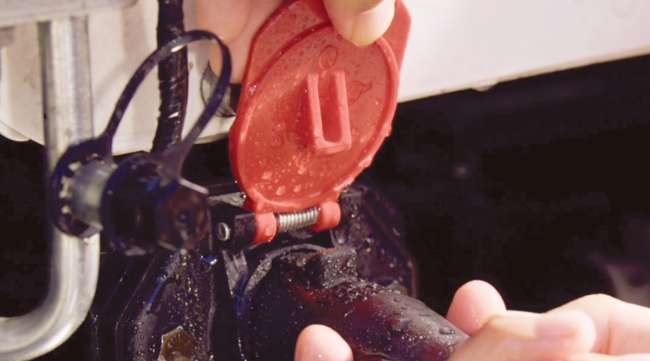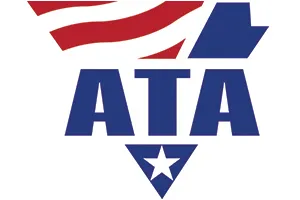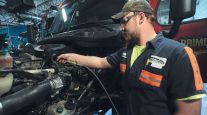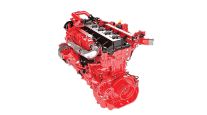Guest Contributor
Industry Needs Agreement on Future of Trailer Connections

[Find the latest in equipment & maintenance: Explore this quarter's issue of Calibrate]
The future of the trucking industry in North America depends on our continued advancements in safety, cost and productivity. Sensors, actuators, computers and information are key to our ability to accomplish these goals. Unfortunately, the industry is faced with a bottleneck of constrained power and insufficient communications speed.
It is worse than my first home built in the 1950s that had a 60-amp power distribution box and relied on magazines, newspapers, broadcast television and radio for information. Today, my home has a 300-amp service, a 48-amp charger just for my electric vehicle, multiple cameras for security, high-speed internet, wireless home controls for lights and wireless phone connections.
The constraint for trucking is the limited power and information capabilities of the one or two seven-way connectors between the tractor and the trailer that are of the same 1950s vintage. Beginning more than 25 years ago, the inadequacy of those seven connections were known. When the trailer anti-lock braking system mandate took hold, the industry was surveyed — data indicated 15%-40% of trailers had more than the single seven-way connection. They were used for liftgates, strobe lights, winches, generators, lift axles, lighting, batteries and motors for hydraulics. We redid the survey in 2020 as the Technology & Maintenance Council began, in earnest, to look at the Next Generation of Tractor Trailer Electrical Architecture through the S.7 Trailers, Bodies & Material Handling Study Group and the Next Generation of the Tractor-Trailer Connector through TMC’s S.1 Electrical Study Group. Over the past 20 years, the use of additional connections has grown to well over 50%.
The industry, at all levels of decision-making, did come together in the late 1990s to maintain the seven-way connector for backward compatibility and provide for some future power and information needs. Today, that solution has been found to be lacking in providing adequate power to trailers in multiple configurations, insufficient with information capability for CASE vehicles (Connected, Autonomous, Safe/Sustainable, Electric), and the advancements in wireless communications have made the information channel susceptible to cybersecurity eavesdropping and attack.
More Q1 Calibrate

►VMRS Portal Is Nearly Here
►Freeze: Our Electric Future: You Don't Have to See It to Believe It
►Five Questions: Craig Provonsha
►Industry Needs Agreement on Future of Trailer Connections
►Baxter: Driver Support Is Key to Electric Powertrain Adoption
Explore the Issue!
The member companies of TMC have done a solid job of wrestling with the future needs and devising solutions that look to the future yet can connect with the past, physically and figuratively, with the roughly 6 million trailers and 2 million to 3 million tractors in operation. TMC’s S.7 Study Group published a position paper, TMC PP 2023-1: Design Recommendations for Next Generation Trailer Electrical Architecture, at the beginning of 2023. Several companies publicly signed on to supporting the 14 statements as “TMC seeks to help ensure that tomorrow’s products are backward compatible and forward looking to enable better safe and efficient commercial vehicle transportation.”

Menig
TMC’s S.1 Electrical Study Group has been working diligently to coalesce on a tractor-trailer interface connection that meets the goals outlined. S.1 has agreed on reviewing potential solutions against the S.7 recommendations and simplified it to these five interface areas:
1. J560 compatibility (existing seven-way)
2. CAN network(s)
3. Ethernet network(s)
4. Additional pins
5. Intellectual property
Some excellent proposals have been put forth by multiple companies. Nine different solutions are being considered for this important future interface. Some are already being trialed or sold into the market. This raises a significant possibility of chaos and incompatibility in the field, similar to the issue we have had with electric charging connectors. My electric vehicle can use two of the many charger interfaces and I look forward to a dongle to connect to the Tesla infrastructure as numerous companies have made agreements at high levels to support that network.

Change must come from the top down. Leaders in all facets of our industry need to agree on the future tractor-trailer connection. Working members of the study group cannot do this alone. Your strategic decisions are needed to drive the industry now. New emissions regulations come into effect in 2027 and the industry is driving toward more and more electrically powered vehicles. The industry needs your direction now so that we can put the new connection in place in time. Why now? New Food Safety Modernization Act requirements will be enforced in 2026. Just as we require four years’ notice for new emissions, it takes time to put new designs into production. We must consider support tools for manufacturing plants, for dealers and for fleets. A single, agreed way to connect can simplify life for everyone in trucking and save on support costs.

I propose the leaders of product strategy, marketing, engineering and business, under the auspices of TMC and its parent organization American Trucking Associations, along with Motor Equipment Manufacturers Association/Heavy Duty Manufacturers Association and others, get together in a high-level summit and come out with a joint statement on what connection to use going forward.
In this way, the industry can move collectively in the same direction in time for the new engines that will be coming to meet 2027 emissions and fuel economy regulations, and we can avoid chaos in the connection to electrically powered tractors before the volumes get large.
Paul Menig is CEO of Business Accelerants and executive director of the Transportation Safety Equipment Institute. He is a longtime member of ATA’s Technology & Maintenance Council and is a recipient of the council’s highest honor — The Silver Spark Plug. He is active in TMC’s S.1 Electrical and S.7 Trailers, Bodies & Material Handling Study Groups as well as the council’s Future Truck Committee, having chaired many task forces, most recently dealing with future tractor-trailer connectivity issues. Menig has more than 40 years of experience in the trucking industry and has held engineering positions with Daimler Truck North America, Eaton and GE. At Daimler, Menig led the Mechatronics Group, where his teams introduced numerous electronic products, including automated manual transmissions, electronic braking, radar collision warning, electronic engine controls, telematics and more.
Want more news? Listen to today's daily briefing below or go here for more info:





